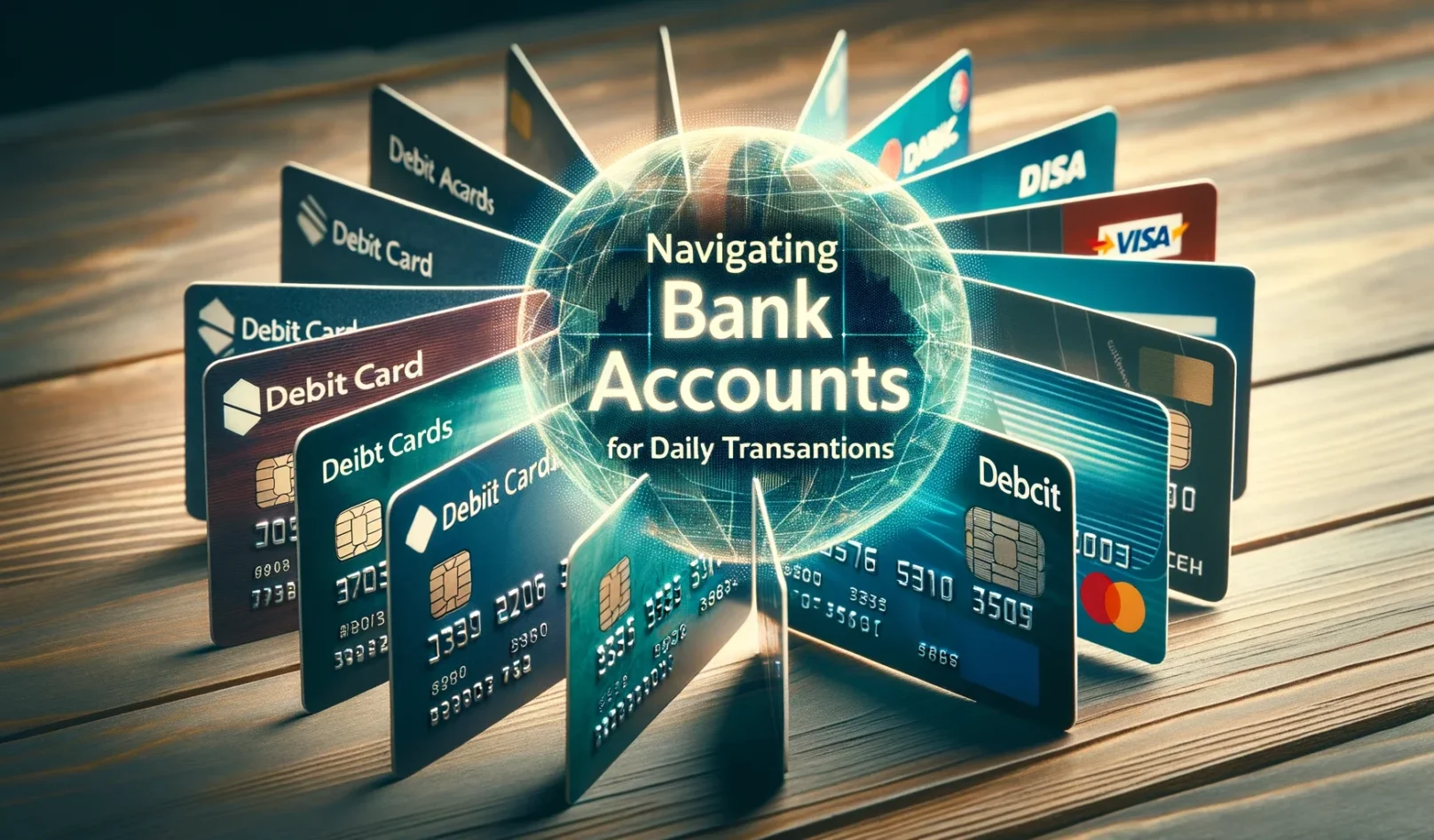
From cash withdrawals to online purchases, our bank accounts facilitate vital financial transactions on a daily basis. With the multitude of account types available, selecting one aligned to your specific needs is crucial for seamless money management. This comprehensive guide examines the optimal bank account options for efficient everyday transactions.
Navigating Bank Account Types for Daily Transactions
Choosing a bank account unsuited to your lifestyle can lead to frustrating limitations, steep fees, and missed opportunities. By evaluating account features through the lens of your transactional needs, you can identify the ideal fit. Whether you require unlimited in-person withdrawals, robust mobile banking, or interest earnings, the right account can optimize your daily money movements.
The Cornerstone of Daily Transactions: Checking Accounts

For most individuals, the checking account forms the core of their everyday banking and transactions. Key features make it indispensable:
Flexible Access and Usage
Checking accounts offer instant liquidity via debit cards, checks, and withdrawal access. This enables payments at merchants, bills, subscriptions, and ATM withdrawals. Direct deposit also quickly processes salaries into checking accounts.
Digital Transaction Functionalities
Online banking and mobile apps allow remote deposits, transfers, and account monitoring. This facilitates online shopping, bill payments, account aggregation, and transfer conveniences.
Benefits Beyond Basic Access
Premium checking accounts offer perks like nationwide ATM fee reimbursements, early direct deposit, cash back on transactions, and discounted or free overdraft protection. However, steep monthly fees may apply. Opting for no-fee online checking accounts can provide digital conveniences without high costs.
Savings Accounts: More than Just Savings

Although designed as a savings instrument, basic savings accounts can facilitate transactions:
Principal Functions
Traditional savings accounts allow depositing excess cash and earning interest while maintaining liquidity. Money is accessible via withdrawals and transfers.
ATM and Debit Card Access
Many savings accounts provide ATM/debit cards for in-network withdrawals and payments while limiting transactions. Online transfers allow moving money between accounts.
Better Interest Rates
Savings accounts offer significantly higher interest earnings than checking accounts, albeit at lower liquidity. Opting for accounts with higher rates optimizes passive earnings on surplus balances.
Bridging the Gap with Money Market Accounts
For those needing a hybrid checking-savings combo, money market accounts (MMAs) bridge the gap:
Combined Liquidity and Interest
MMAs offer the interest earnings of savings with limited debit/check privileges. This provides modest transaction access on higher account balances that earn competitive interest rates.
Minimum Balance Needs
The MMA’s higher interest correlate with usually steep minimum balance requirements. Falling below the threshold leads to monthly fees. This makes MMAs impractical for smaller balances.
Capped Transactions
Compared to checking accounts, MMAs limit monthly debits/transfers/checks, often capping at. For higher transaction volumes, checking remains preferable.
Balancing Act: Having Both Checking and Savings
Rather than choosing one, utilizing both a checking and savings account optimizes everyday banking:
- Checking handles active spending, bill payments, debit/ATM transactions.
- Savings provides interest earnings on excess balances and cash reserves.
- Transfers between the two enable shifting money as per need.
- Spreading balances lowers risks and boosts flexibility.
This dual account structure supports daily transaction capabilities with savings functionality.
Special Considerations for Specific Groups

Certain groups should factor in tailored account features:
Students Studying Abroad
For international students, online banks like Marcus by Goldman Sachs offer fee-free foreign ATM usage and currency conversion. This facilitates withdrawals and payments abroad.
Beneficiary Options
For checking accounts, having payable-on-death or transfer-on-death beneficiary designations ensures account access for dependents if the owner is incapacitated or passes away.
Interest-Earning Checking Accounts
A small but rising number of checking accounts, like Capital One 360 Checking, integrate savings-like interest earnings on top of flexible access9. For large balances, this boosts returns. However, restrictions on transactions may apply with higher interest rates.
Comparing Savings Accounts in Australia
In Australia, savings accounts suited for everyday transactions offer these features:
- Minimum monthly fees: Accounts like ING Savings Maximizer charge no monthly fees.
- Higher interest rates: Top accounts offer between 1% to 1.35% base interest.
- Mobile banking integration: Apps like CommBank’s NetBank facilitate deposits and transfers.
Recognized Accounts in Australia
Mozo experts recommend these top accounts for transactional convenience coupled with solid savings benefits:
- ING Savings Maximizer – High interest and no monthly fees.
- RAMS Saver – Also no fees and offers 1.25% base rate.
- BankWest GoalSaver – Strong digital account controls.
Conclusion
Evaluating your daily and monthly transaction needs against the capabilities of checking, savings, and MMA accounts allows identifying the right fit. For most individuals, utilizing both a checking and savings combo optimizes convenience and money management. With the right accounts backing your everyday money movements, you gain financial flexibility and control.
FAQs
What are the key differences between checking and savings accounts?
Checking accounts offer unlimited transactions, debit card access, and maximum liquidity but low or no interest earnings. Savings accounts have higher interest rates but restrict transactions and withdrawals.
Which account is better for paying bills and subscriptions?
Checking accounts are ideal for paying recurring bills, subscriptions, rent/mortgage, and other routine payments as they allow unlimited transactions. Savings have limits.
Is it advisable to use a savings account as your primary transaction account?
Using a savings account for too many transactions can lead to excessive withdrawal fees which negate its benefits. It’s better to use checking as your primary spending account.
Which account is better for paying bills and subscriptions?
Most money market accounts restrict total monthly transactions to 6 or less, limiting debit card usage for purchases. For everyday spending, a checking account is preferable.
What are the key differences between checking and savings accounts?
Students should look for bank accounts with no monthly fees, robust digital banking capabilities, extensive ATM networks, and currency conversion benefits if studying abroad.
More Information:
▶ Can A Power Of Attorney Transfer Money To Themselves
